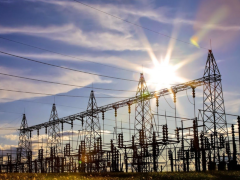Eskom is currently at an advanced stage of development of “virtual wheeling,” which should improve electricity supply and lead to lower prices. This is the claim made in an article published by Business Tech recently.
The article quotes Linsey Dyer and Chris Yelland who say they expect virtual wheeling to allow industrial and commercial customers embedded within Eskom and municipal networks to become customers of the growing network of electricity traders licensed by the National Energy Regulator of South Africa (Nersa). They add that this should lead to more generation capacity and even lower electricity tariffs in the future.
At present, Eskom owns and manages the electricity that independent power producers (IPPs) inject into the grid. Eskom simply connects the IPP to the load centre. Wheeling connects an IPP to a customer via the existing grid network. This requires specialised use-of-system tariffs, billing, metering and data processing systems. While Eskom can offer this service, most municipalities cannot.
Referring to a recent webinar hosted by EE Business Intelligence, Business Tech explains how the Onicah Rantwane, Eskom’s senior advisor for electricity pricing, said that virtual wheeling will be rolled out soon.
“Virtual wheeling allows licensed third-party traders to contract with one or more IPPs for part or all of the IPPs’ energy generated into the Eskom grid,” the experts said. The trader then effectively sells parts of its contracted energy from the IPPs to a basket of customers, with shorter off-take terms than the trader’s power purchase agreements (PPAs) with the IPPs.”
“Enabling wheeling from multiple generators to multiple off-takers (i.e. many-to-many wheeling) thus addresses one of the major limitations of traditional wheeling, which could previously only cope with one-to-one wheeling arrangements.”
In a virtual wheeling agreement, the customer gets a normal electricity supply bill from the electricity distributor (Eskom or the municipality) and a separate rebate from the trader. This means that the municipal electricity distributor does not get a reduction in its revenue stream.
Additionally, no modifications are needed in the customer’s contract with the municipal electricity supply, billing system, or meter. The trader will, however, need to install a time-of-use (TOU) meter at the customer’s premises.
The new process decouples wheeling from the normal retail billing process, making wheeling transactions easier to manage.
The benefits of wheeling
Virtual wheeling will protect the customer from any electricity price increases from Eskom by using lower-cost, renewable energy.
Virtual wheeling will also allow the customer the ability to massively reduce the terms of a PPA compared to a standard one-to-one wheeling agreement.
“By unlocking investments in new generation capacity by IPPs at no cost to Eskom or the fiscus, and by reducing barriers to the wheeling of electricity, virtual wheeling has a knock-on effect of increasing security of supply and reducing load shedding caused by energy shortages,” the experts said.
“However, virtual wheeling (and indeed traditional wheeling) does not change the risk to security of supply in respect of the “wires” business of electricity supply, because this remains in the hands of Eskom and municipal distributors.”
More power from the private sector
New generation capacity from IPPs – particularly in the private sector is required – as Eskom can currently not meet the nation’s electricity demand – hence, the nation’s load shedding.
Moreover, besides Medupi and Kusile, there is no new capacity planned from Eskom.
“Several studies indicate that by 2033 South Africa will require about 60 GW of new renewable energy, which the private sector is best placed to deliver. The advent of electric vehicles and hydrogen markets is likely to further drive a rapid growth in electricity demand over the coming decades,” the experts said.
“With improved market efficiency and transparency, supply and demand dynamics will determine market prices. A market will support the integration of renewable energy by valuing its contribution to the grid.
“Through pooling of energy resources and sharing of reserves, market participants will experience enhanced security of supply and improved power system stability.”













